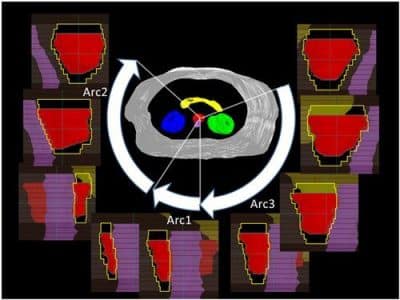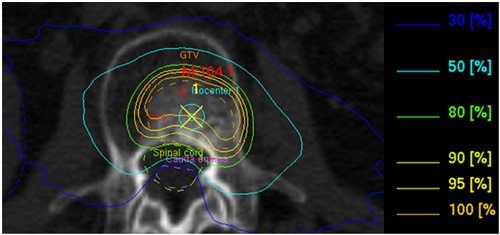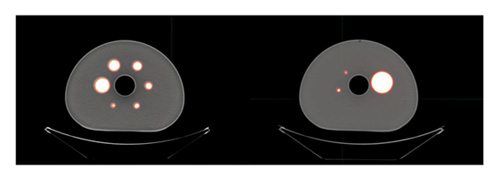Medical physics is concerned with radiation and dosimetry in the clinical services of the Nuclear Medicine and Radiology Departments, including technological advancement of new instruments and procedures in using various medical imaging modalities. The medical physicist works in the areas of medical Diagnostic Imaging, Radiation and Dosimetry with the aim of ALARA, which is a radiation safety term that stands for As Low As Reasonably Achievable. It simply means that radiation exposure should be minimal towards medical physics radiation personnel and patients within a reasonable effort by the organisation.
The Role of Medical Physicists in Radiation Safety
Medical physics plays an integral part in the patient treatment plan, especially in the area of diagnosis and therapy, including dosimetry and the application of radiopharmaceuticals in radiology and radiography. The role of medical physics is to interact with physicians, especially in the oncology setting: their critical role is to devise a safe treatment plan which involves administering the correct radiation dose to the cancer patient, for example, during proton therapy. Consequently, complex calculations are required for external radiation beams or internal radioactive sources. The most important factor is to derive accurate dosimetry radiation calculations involving the radiation output from the sources employed at the various cancer stages.

Dosimetry in Radiotherapy: Treatment Planning and Accurate Dose Delivery
According to dosimetry, the reirradiation of spinal metastases requires previous knowledge of the delivered dose to the spinal cord. This information is necessary to minimise further exposure to radiation dose delivery. In most cases, the reirradiation of spinal metastases is performed by stereotactic radiosurgery using the cyberknife or tomotherapy. Cyberknife procedures require the patient to remain still for longer time periods. This can induce stress in the patient. Therefore, the radiation dose transferred to the patient is performed using the principles of tomotherapy. This approach uses rotational radiation beams, thus limiting damage to the surrounding organs. Furthermore, stereotactic body radiotherapy is employed for reirradiation. This allows for high radiation doses to the target while sparing the spinal cord and neighbouring organs.

Dose distribution
Medical physics is central to nuclear medicine either in a regulatory capacity or for consultation with other medical colleagues. Nuclear medicine uses radiotracers to delineate organs and to decide the most significant physiological variables. These may include metabolic rates and blood flow analysis.
Another area that involves the physicist is equipment performance, writing standard operating procedures (SOPs), quality control in imaging systems and input into the design of radiation installations. In addition, the physicist has a role in radiological protection and the control of radiation exposure to medical staff and patients. In most cases, the medical physicist is part of the clinical and scientific advisory board to help solve and analyse problems arising in specialised medical radiation areas.
Advancing Medical Physics: Innovations in Imaging, Radiotherapy, and Diagnosis
Medical physics radiation has a vital role in the medical research team. They have numerous responsibilities in the fields of oncology, cardiology, and neurology using radiation. Oncology departments work mostly with radiation and are interested in the mechanism of biological change after irradiation. Further technological advances are paving the way for high-energy machines to treat patients and new techniques to determine the exact measurement of radiation. Computer software designed based on more advanced algorithms is used to calculate the correct dose for patient treatment. An active area of research is particle irradiation applied to biological systems compared to photon therapy.
Medical physicists play a significant role in patients with heart disease by measuring the blood flow and levels of oxygenation. Mental health patients interpret the evoked potential (EP) tests due to the brain’s electrical activity, which is also an application used in multiple sclerosis patients. Medical physicists are also interested in the application of digital computers in medicine and information systems. In addition to the concept of diagnostic problems, which include processing, data storage and accessing medical images. Furthermore, the amount of radioactivity in the patient should be measured, and the behaviour of radioactive substances in the body should be studied. Medical physicists are an integral part of the development of instrumentation and technology applied to theranostic medical imaging.
Consequently, this involves the use of magnetic and electro-optical storage devices for the manipulation of X-ray images. Furthermore, the physicist has a role in quantitatively analysing static and dynamic images using digital computer techniques. In addition, radiation methods are used for the analysis of various tissue characteristics. With the expanding areas of MRI-CT scanners used to generate cross-sectional images of the human body, medical physicists engage in research and development on imaging procedures, utilising non-radiation infrared and ultrasound sources.

Quantitative Imaging Phantoms for Radiation Therapy: Dosimetry and Treatment Planning
The IEC Image Quality Phantom conforms with the NEMA 2012 standard and is applied in the simulation of whole-body PET imaging and camera-based coincidence imaging techniques. This quality phantom calculates the coincidence count rate parameters for both brain and cardiac imaging. Furthermore, the IEC Quality Phantom extends to the evaluation between the true coincidence count rate and radioactivity. Also, to address any errors relating to the address pile up and the evaluation of the count loss in the correction scheme.
Medical imaging physics deals with testing, optimization, and quality assurance, especially in diagnostic radiology physics, which includes radiographic X-rays, fluoroscopy, mammography, angiography, and computed tomography. Medical imaging physics is also important in the area of non-ionizing radiation modalities such as ultrasound (US) and magnetic resonance imaging (MRI).
The duties of the medical physicist include radiation protection procedures and radiation monitoring, including dosimetry. The current role of the medical imaging physicist includes the responsibility of PET radiation and SPECT imaging and hybrids with MRI and CT scanners.
Functional magnetic resonance imaging (fMRI) began in the 1990s by Ogawa and Kwong. This technique is used to measure brain activity and detect changes in the oxygenated blood and its response to neural activity. Imaging studies have shown that when the brain area becomes more active, it consumes more oxygen. Therefore, to keep up with this demand, the blood flow increases in these active regions of the brain. fMRI can be used to produce various activation maps showing which parts of the brain are active. fMRI is part of the medical imaging apex, including positron emission tomography (PET) imaging and near-infrared spectroscopy (NIRS). These two techniques are involved in the study of blood flow and oxygen metabolism of brain activity. fMRI of the brain has several key benefits, including a non-invasive procedure that does not involve radiation. Both of these provide safety for the patient and medical personnel. Also, it produces excellent spatial and temporal resolution.
You are here: home »
